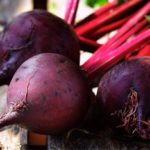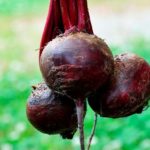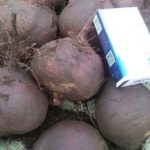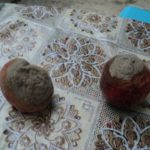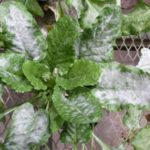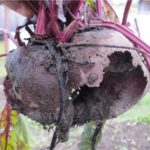Beetroot Detroit has received great popularity for its high-yielding, taste, and for its excellent appearance. The variety is unpretentious to the conditions of growth and requires minimal care. The description and characteristics of this variety are given below.
Table of contents
Description and characteristics of the beet variety Detroit
Beet high-yield varieties of Detroit bred by Italian breeders. Refers to table species. The term from sowing seeds to harvest - 100 days This variety is suitable for growing in open beds and in moderately severe climatic conditions - under a film cover.
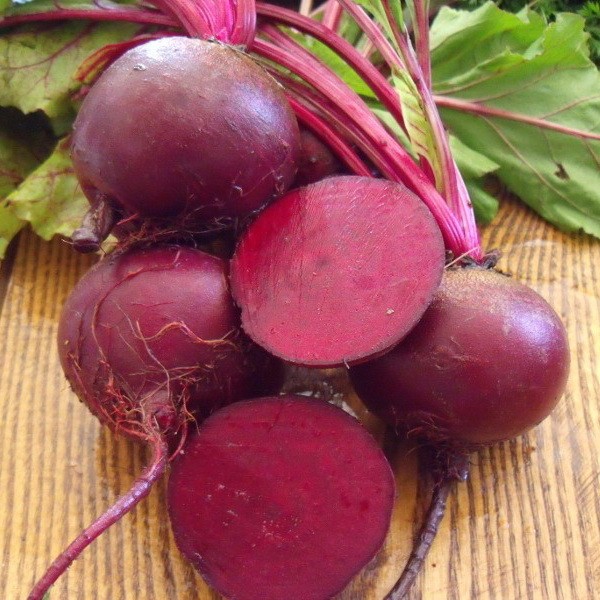
Detroit, tolerates minor frosts, and springs up after sub-winter seeding. The variety withstands various diseases.
Beet round shape with a thin peel. The root crop has claret pulp, without white streaks and rings. The average weight of the vegetable - 200 gram.High-yielding variety - from one weave you can collect up to half a ton of tasty and sweet root vegetables.
Because of its rich taste, Detroit is used fresh, in the preparation of canned foods, decoctions and juices.
The beet contains up to 14% sugar and 20% dry matter. In this regard, Detroit is subject to long-term fresh storage, without losing its taste and beneficial properties.
Breeding history and region of growth
Beet varieties Detroit came to our country from Italy.
The variety has three varieties:
- Detroit dark red - early ripe, rounded root-crop, has flesh of dark - red color, without streak.
- Detroit 6 Rubidus - early ripe, rounded-aligned fruit with a thin axial stem.
- Detroit 2 Nero - high-yielding, mid-season beet variety, with burgundy pulp. Subject to long-term storage.
- Detroit dark red
- Detroit 6 Rubidus
- Detroit 2 Nero
All these varieties can be grown in regions with an unfavorable climate.
Advantages and disadvantages
The advantages include:
- High yielding
- Frost resistance
- Uniform germination and simplicity in cultivation
- Variety resistant to diseases
disadvantages the variety is missing.
Planting seeds
This variety grows well as when grown in seedlings and directly in open ground. Planting beet seedlings, gives the opportunity to get a harvest much earlier, but at the same time the young plant needs to create a comfortable environment and proper care.
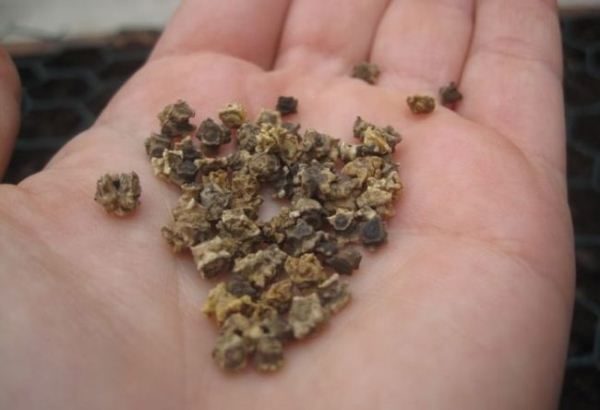
Rules for planting seeds in open ground:
- The root crop is sown in the previously prepared nutrient soil. In the fall, they dig up the earth on a spade bayonet and fertilize it with organic and mineral fertilizers.
- Place to grow beets choose solar and protected from drafts.
- The ideal place is considered beds where cucumbers, tomatoes, potatoes or onions used to grow, and where cabbage and carrots grew, it is not suitable for root vegetables.
- With increased soil acidity, ash or lime is added to it.
- Seeds are sown on beds when land warm up to 10-13 degrees.
Two ways to prepare seeds:
- Beet seeds before planting soaked in warm water on 24 o'clock while constantly changing the water.
- The seeds are wrapped in cloth soaked in a weak solution of potassium permanganate and leave for 4 days warm. It is necessary to ensure that the fabric is not very wet, and was constantly wet.
Planting seeds:
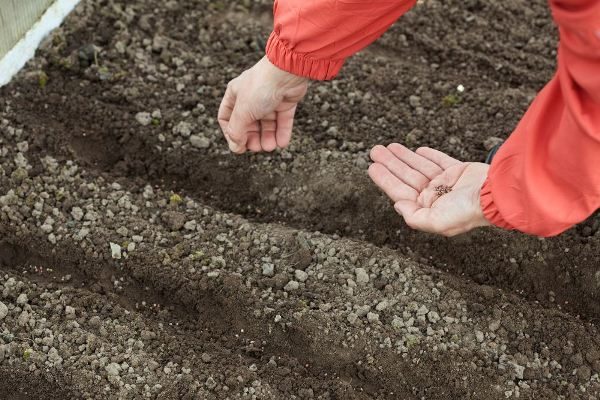
- Seeds are sown in the furrows to a depth of 3 cm
- Furrow spacing - 25 cm, between seeds - 15 cm
- Planting material sprinkled with earth
- Beds mulch
- First shoots appear in a week
Seeds of beets have properties to bond together. When such seeds are found, you should not try to separate them, as this may cause irreparable damage to planting material.
Growing conditions
After germination, it is necessary to closely monitor the development of young plants. For good growth, you should follow some rules:
- Make sure that did not form an earthen room, as it prevents the penetration of nutrients into the soil and slows the growth of the plant.
- Young seedlings need constant weeding from weeds. Weed grass drowns out young plantings, which adversely affect the quality and quantity of the crop.
- Timely watering plants and soil loosening, while improving gas exchange and breathability.
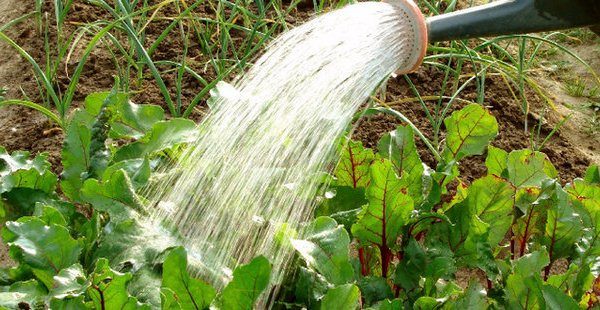
Watering is done in the evening. During the formation of the fetus, watering increase. A month before harvesting, watering stops.
- Loosening produce every second day after watering.
- Mulching beds. This procedure is carried out for longer preservation of moisture in the ground and to reduce the germination of weeds.
- Lure. Fertilization is carried out several times per season. Beets can not be overfed, as it cracks when there is an excess of fertilizers and forms voids.
- First bait carried out in May, at the stage of 2-3 sheets, with organic fertilizers, they will saturate the soil with nitrogen.
- The second - at the stage of the second weeding. Potash fertilizers are applied to the ground.
The shortage of mineral fertilizers can be determined by the appearance of the root crop:
- With a shortage of potassium - the tops of the plant brightens
- Sodium deficiency - detected by redness of the veins on the leaves
- Thinning. Thinning is done twice per season. The first time - with the appearance of 2-3 true leaves, leaving the distance between plants 3-4 cm. The second time - after the growth of 5-6 leaves. The distance is 7-8 cm. Thinning beets produce only in cloudy weather.
Peculiarities of this variety
- Root grows well both in open ground and under film cover.
- Precocity - In the warm season, you can take two crops.
- Variety can be grown in a Siberian climate.
- When sub-winter crops forms an early harvest.
Diseases and pests
During fruiting, beets are very vulnerable to many diseases and even though the Detroit variety is immune to many diseases, it may hit:
- White and gray rot - the root neck and lower leaves are affected.
- Downy mildew - The disease develops on the leaves.
- Medvedka - An adult gnaws through the roots and stems, which leads to the death of the plant.
- Winter scoop - the caterpillar gnaws young shoots, destroys leaves and spoils the developing root crops.
- Gray rot
- Downy mildew
- Beet struck Medvedkoy
- Winter scoop
Conclusion
By planting Detroit beets on your plot, you provide yourself with a tasty, juicy, and most importantly, a useful root crop. The vegetable is good fresh, canned and in the preparation of fresh juices.

